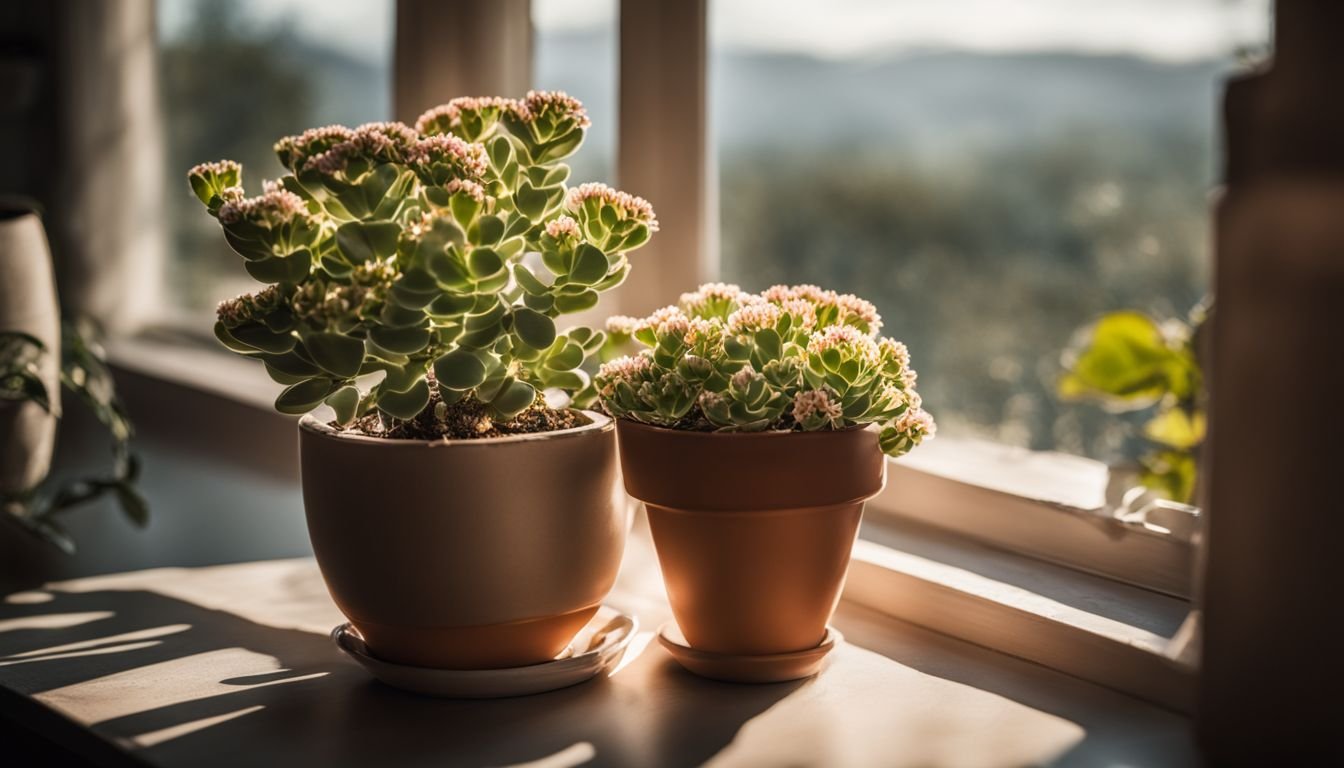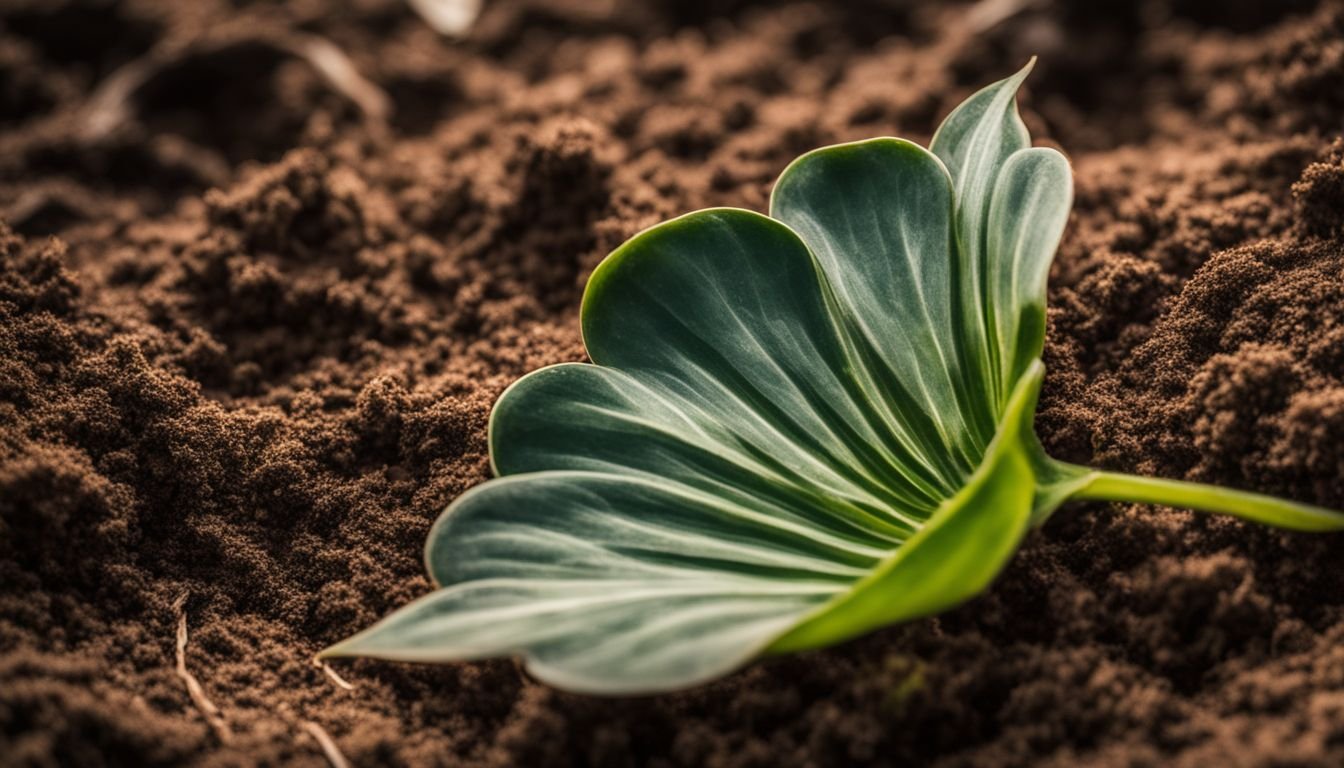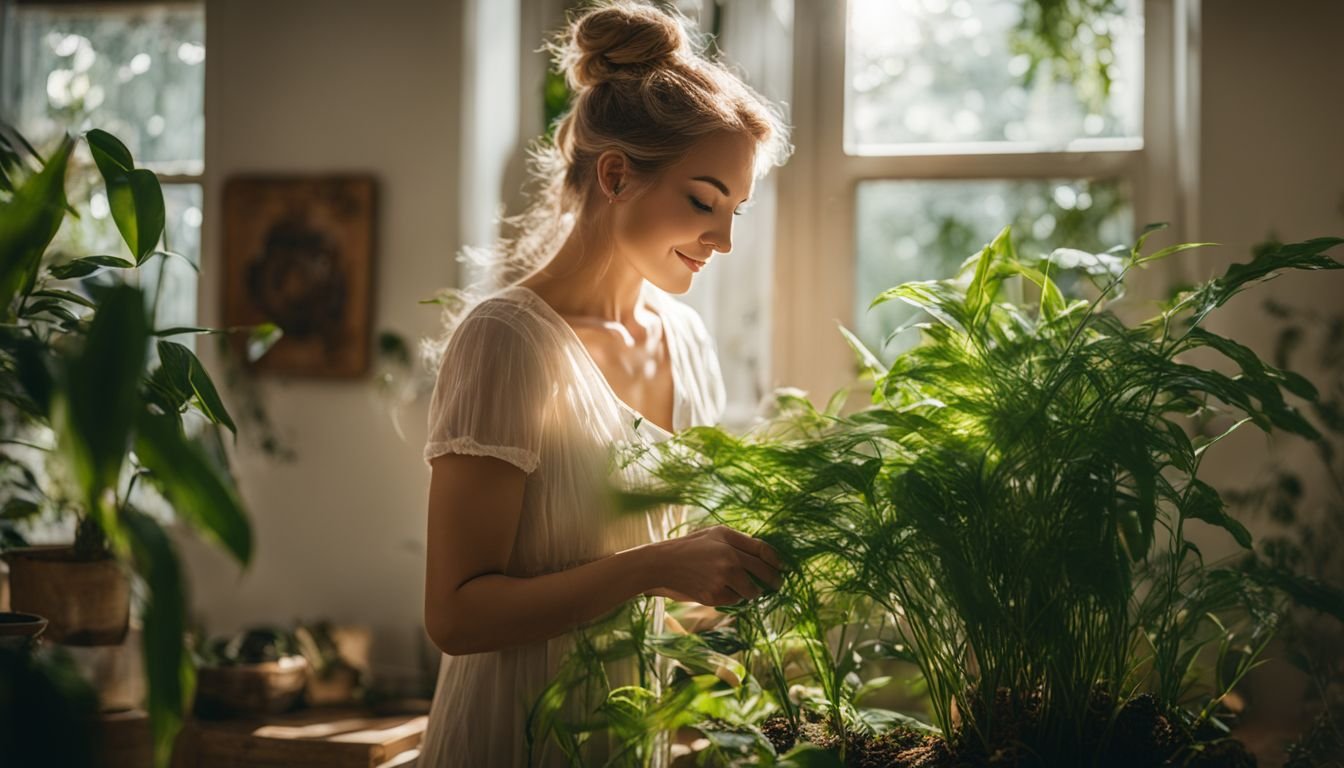Have you ever caught yourself having a proper gander at a display of succulents, pondering which green mate to adopt that doesn’t ask too much of your already chockers schedule? You’re definitely not flying solo on this one.
A fair few of us here have been down that track and know all too well the puzzle of choosing a plant that’s happy with our easygoing gardening vibe. After rolling up our sleeves and getting stuck into some research, we’ve unearthed a real gem for both the seasoned green thumbs and newcomers: Kalanchoe tomentosa, better known as the Panda Plant.
This little beauty with its fuzzy leaves is an absolute trooper when it comes to low-maintenance care, making it an ace addition to any indoor nook.
Not only is this succulent a feast for the eyes but looking after it is a breeze – which is ripper news for those of us who might miss watering it every now and then. With conditions that mimic its native digs, such as top-notch draining soil in snazzy pots placed in spots with indirect sunlight, this little legend thrives without needing you to fuss over it constantly.
Our guide’s going to walk you through all the crucial bits – from what kind of light will make your Panda Plant crack a smile to how often you should give it a drink and what soil gets its roots dancing.
Keen for some green wizardry in your life? Stick around!
Key Takeaways
- Place your Kalanchoe tomentosa in a spot that gets bright, indirect sunlight for about 6 hours every day. Proper light helps keep the plant healthy and maintains its unique leaf colors.
- Water your Panda Plant every two weeks during warm seasons once the topsoil is dry, but ease up on watering during cooler months to prevent root rot and other moisture-related issues.
- Choose well – draining or rocky soil for your plant, as this mimics its natural habitat and promotes strong growth without waterlogging the roots.
- Propagate new Panda Plants by taking a healthy leaf, letting it callous over for a couple of days, then placing it lightly on top of suitable soil until roots form. This simple process can expand your succulent collection.
- Regularly check for pests like mealybugs and apply safe treatments like neem oil if needed while ensuring not to overwater or leave leaves damp to avoid attracting bugs or developing fungal diseases.
Essential Care for Kalanchoe tomentosa

Caring for your Kalanchoe tomentosa starts with picking the right spot in your home. It loves bathing in bright, indirect sunlight and thrives in well-draining soil within a decorative pot.
Keep an eye on its watering needs; this plant prefers a dry topsoil before getting another drink. These simple steps ensure your fuzzy friend stays healthy inside.
Light requirement
Kalanchoe tomentosa thrives in bright, indirect sunlight. This means we need to place our panda plants where they can soak up about 6 hours of sunlight daily. For those of us growing them indoors, positioning them near a window that gets plenty of morning or late afternoon sun works best.
These spots ensure our fuzzy friends get the light they need without the harsh midday rays that could harm their delicate leaves.
We also know keeping our plants happy isn’t just about hitting that sweet spot with sunlight; it’s ensuring we avoid overexposing them to direct, strong sunlight which can lead to leaf burn.
A decorative pot on a well-lit patio or an indoor stand by a sunny window ensures our panda plants grow healthy and strong while maintaining their unique variegated appearance.
“A little bit of sunshine is all it takes for the Panda Plant to show its true colours.”
Watering schedule
Moving from how much sunlight your Panda Plant needs, let’s talk about its watering schedule. We must give our plants the right amount of water, especially during the warmer months.
For Kalanchoe tomentosa, this means soaking the soil every two weeks in summer and spring. Be sure to check the topsoil; if it feels dry, it’s time to water.
As seasons change, so do our plant care routines. In colder months, these succulents need less water. Cut back on watering during winter to prevent issues like root decay, a common problem for many houseplants kept indoors.
This helps mimic their natural habitat conditions where they thrive on minimal moisture.
For those living in areas with quarantine charges or specific shipping options due to state restrictions (like NT, TAS, WA customers), remember that Kalanchoe Tomentosa is a great choice because of its simple needs and resilience.
Its tolerance for dry and poor soils makes it perfect for Aussies aiming for waterwise gardens while enjoying indoor cultivation without too much fuss over frequent watering schedules.
Suitable soil type
Choosing the right soil for your Kalanchoe tomentosa is crucial. This succulent thrives in free-draining or rocky earth, perfect for containers and outdoor gardens. Such soils make it a top pick for dry and infertile conditions, ideal for creating waterwise landscapes without much hassle.
Ensure the crown of this fuzzy-textured plant sits above the ground line to ward off root rot. For gardeners in areas like Image Flat, QLD 4560, incorporating potted plants into your collection can bring a unique touch with minimal effort.
Opting for such well-draining substrates lets us avoid common issues and keeps our succulents looking their best.
Propagation of the Panda Plant Succulent

We all love the fuzzy texture of Kalanchoe tomentosa, known as the Panda Plant succulent. It’s quite easy to grow more of these lovely plants from parts you already have.
Here’s how we do it:
- Choose a healthy leaf from your Panda Plant. Make sure it looks strong and has no spots or damage.
- Gently twist the leaf from the stem, taking care not to tear it. We need a clean break for successful propagation.
- Let the leaf sit out in a dry place for a day or two. This step helps the cut end callous over, which is crucial for preventing rot.
- Find a shallow tray or pot with well – draining soil. Garden centres have special mixes just for succulents, or you can make your own with equal parts potting soil and coarse sand.
- Place the calloused end of the leaf on top of the soil without burying it. Just let it rest there lightly.
- Water lightly just to dampen the soil but don’t soak it. We want to avoid rot at all costs.
- Keep this setup in a spot that gets lots of indirect light but no direct sun, which might be too harsh for our little cutting.
- In a few weeks, you’ll start seeing tiny roots forming, followed by new shoots.
Growing Kalanchoe tomentosa this way brings us closer to nature and fills our homes with beauty from Image Flat, QLD 4560, to nurseries across Australia. And as these little ones take root, we’re reminded of the simple joys that gardening brings into our lives.
Handling Common Pests and Diseases
We often see our beloved Panda Plant succulent become a home for mealybugs, scale insects, and aphids. These tiny critters can harm the plant if we don’t act fast. The first step is to check the plant regularly for any bad bugs.
If we find any, applying neem oil or soap that kills insects helps keep these pests away. This method proves safe and effective for our plants in Image Flat, QLD 4560.
Overwatering our Kalanchoe tomentosa invites root decay and fungus problems. To avoid this issue, we make sure the soil dries out completely before giving it more water. Keeping water off the leaves also prevents fungus from growing.
Ensuring there’s plenty of air moving around the plant will help keep it healthy too. By adopting these simple but essential care steps, stem-cuttings stand a better chance at thriving without being troubled by diseases or pests.
Conclusion
Caring for Kalanchoe tomentosa, or the Panda Plant Succulent, brings joy and a bit of nature’s beauty into our homes. With simple needs like low water, well-drained soil, and plenty of sunlight, this plant thrives in Image Flat, QLD 4560 and beyond.
Propagating your own or fighting off small insects makes you more connected to your garden. Across Australia, from pots in sunny windows to landscapes in frost-free zones, this fuzzy-leaf friend finds its way.
So grab some fertiliser formulated for succulents like Osmocote 500g Cacti and dive into growing these charming plants that add a sprinkle of green to our lives.
FAQs
1. Where can I grow Kalanchoe Tomentosa in Australia?
You can successfully grow Kalanchoe Tomentosa, or the Panda Plant, in regions like Image Flat, QLD, 4560 where the climate is suitable for succulents.
2. What kind of care does a Panda Plant need?
The Panda Plant requires minimal water, plenty of sunlight, and well-draining soil to thrive. It’s a low-maintenance plant perfect for beginners.
3. Can I keep my Kalanchoe Tomentosa outside all year round?
In warmer areas such as Image Flat, QLD, your Panda Plant can enjoy outdoor living throughout the year as long as it’s protected from extreme cold.
4. How often should I water my Panda Plant succulent?
Water your Kalanchoe Tomentosa sparingly; only when the soil has completely dried out from the last watering. Over-watering can harm your plant.
